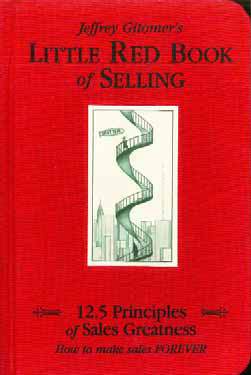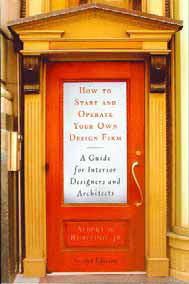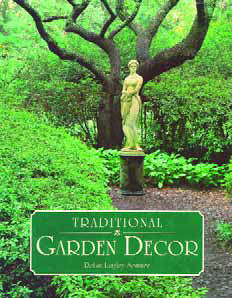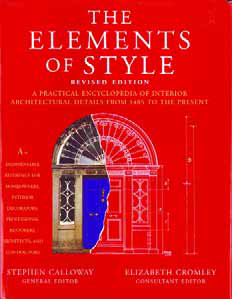Book & Media Reviews
For all the “importance” attached to creating works of art in outdoor environments, there’s no denying the fact that, in the majority of cases, the root of much of the appeal of watershape designs (and exterior designs in general) still has much to do with having a good time. In my own practice, for example, I’d estimate that somewhere around 85 percent of my clients are inspired by the desire to build watershapes and pool environments as sources of play for their children or grandchildren – or, as some put it, because they’re still big kids at heart and “just want to have fun.” This is why I couldn’t resist picking up
You don’t have to be a physician to know that watershapes offer profound benefits when it comes to health, fitness and wellness. Indeed, most people know that swimming and other forms of activity in water are, along with hydrotherapy, among the healthiest of all activities known to us mere mortals. Unfortunately, and for reasons that escape me, promoting the value of that connection has never spent much time on our industry’s front burner. My own curiosity about the topic recently led me to seek published resources, and I’m sad to say that my search hasn’t yielded much. It reminds me of my early days in this industry and a time long ago when I craved books that would inspire my design work: For a long time, there wasn’t much to find – but that’s all changed now. My hope is that the case with water-related health and wellness is the same and that it will soon become a
As a rule, I’ve resisted the temptation to cover books about sales in these columns. I’ve read a great many of those books through the years, and I’ve always tended to think of them as buffets where I pick up useful insights, wisdom or motivation – and ignore suggestions that don’t seem as useful. But no single book I’ve run into has proved to be so helpful that I’ve felt compelled to share it with you here. At last, however, I’ve found an exception – a wonderful book by emerging sales guru Jeffrey Gitomer called The Little Red Book of Selling (Bard Press, 2004). I picked up a copy of this compact 220-page volume two years ago at an airport bookstore (and have picked up a couple more since then), and I see why Gitomer is becoming one of the leading voices when it comes to sales. He may not have reached the same status as Zig Ziglar or Dale Carnegie (both of whom I admire greatly), but his star is
Although we might not commonly think of watershaping and exterior design in this way, a great many of the details we shape are designed to fool the eye or somehow create illusions. Consider the pools that are made to appear so natural that they don’t seem to have been man-made – or vanishing edges that conjure the impression that there’s no visual boundary between the surface of a swimming pool and a distant body of water. Those are two familiar tricks of the trade, but if you stop and think about it, there are many less-obvious examples as well: water flowing under a bridge that leads to nowhere; rocks half buried in the landscape to give the illusion that they are part of a subterranean geological formation; small bits of individual tile that come together to form a mosaic image; or modular walls that appear to float in space. In my own work, to add another example, I’ve started to be deliberate about
It’s unlikely that anyone back in 1992 would have imagined that the daughter of fashion designer Calvin Klein would change the way we think of swimming pools. That might be a slight exaggeration, but to me there’s no question that Pools by Kelly Klein, first published by Rizzoli 15 years ago and re-released late in 2007, was unique at that time in treating pool design as a legitimate art form. In many ways, in fact, I think her book may well have ignited the design revolution that has unfolded in the years since it was first published. I didn’t run across this oversized volume until 1999, when I attended
If there's one thing most designers of all types have in common, it's that we tend to possess built-in senses of personal independence. I believe that's why most of us, at some point or other in our careers, consider taking the big step of going out and starting our own practices. I haven't done that as yet, and a big part of the "why" has to do with knowing that a great many of those who do hang their own shingles wind up failing - often sooner rather than later. Yet even though I enjoy the security of working for a company rather than running one myself, I must confess that, for a long time now, the idea has intrigued me - if for no other reason than I want to know what it takes to make a go of it. That's how I came to pick up a copy of How to Start and Operate Your Own Design Firm by Albert W. Rubeling, Jr. (2nd edition, Allworth Press, 2007). This 240-page text offers a wonderfully thorough discussion of the challenges I'd always imagined, and I think it would be of use even to those who are already up and running in addition to those who are only contemplating or curious about taking the plunge. The author obviously has a
If there's one thing most designers of all types have in common, it's that we tend to possess built-in senses of personal independence. I believe that's why most of us, at some point or other in our careers, consider taking the big step of going out and starting our own practices. I haven't done that as yet, and a big part of the "why" has to do with knowing that a great many of those who do hang their own shingles wind up failing - often sooner rather than later. Yet even though I enjoy the security of working for a company rather than running one myself, I must confess that, for a long time now, the idea has intrigued me - if for no other reason than I want to know what it takes to make a go of it. That's how I came to pick up a copy of How to Start and Operate Your Own Design Firm by Albert W. Rubeling, Jr. (2nd edition, Allworth Press, 2007). This 240-page text offers a wonderfully thorough discussion of the challenges I'd always imagined, and I think it would be of use even to those who are already up and running in addition to those who are only contemplating or curious about taking the plunge. The author obviously has a
I do much of my work in the residential market, and it's increasingly common for my clients to have relatively small yards for which they want something both unique and special. In those settings (and in larger ones as well, but often not as critically), I've found that it's the small touches that make the most difference. Frequently, it's these simple decorative elements that transform designs into unique compositions that reflect clients' personalities and gives their homes that special feeling. Yes, you can create terrific swimming pools and other watershapes and include wonderful hardscape or shade structures and landscaping in any project, but especially in compact spaces, the character of those elements may not be fully expressed or realized until you add these finishing touches. I recently found a wonderful book that shows
I do much of my work in the residential market, and it's increasingly common for my clients to have relatively small yards for which they want something both unique and special. In those settings (and in larger ones as well, but often not as critically), I've found that it's the small touches that make the most difference. Frequently, it's these simple decorative elements that transform designs into unique compositions that reflect clients' personalities and gives their homes that special feeling. Yes, you can create terrific swimming pools and other watershapes and include wonderful hardscape or shade structures and landscaping in any project, but especially in compact spaces, the character of those elements may not be fully expressed or realized until you add these finishing touches. I recently found a wonderful book that shows
When people ask me how I approach the design process, I tell them it's always based on three things: The clients' ideas about what they want; the site's characteristics; and the architecture of the home. If I had to pick one of those factors that's been the most challenging for me to master, I'd have to say it's been gaining a firm grasp on architecture and the details that make up architectural styles. And when I've been asked where that kind of background can be gained in the form of a reference book, I've always been at something of a loss to make a recommendation. Basically, it's tough to narrow things down because architectural design is so huge a topic. Without an architect's educational background and training, I've been left to pick up what I can mostly by paying attention to what I see around me - a challenge in itself in my area, where most




















